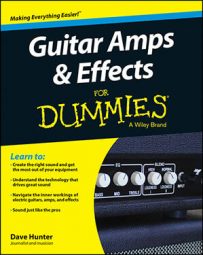However impressively you may be able to sound like another great player out there, that acknowledged “great tone” — like any flavor you overindulge in — gets tiring after a time, both to you and to your listeners. Spicing it up with some variation is a great way to awaken the ear, to grab some fresh attention, and also to renew your own interest in playing.
And be aware that different sounds don’t necessarily mean different gear. Plenty of legendary artists have achieved distinctive signature tones using the same rigs as other artists who sound very different.
For some quick examples of how you truly can get one guitar-and-amp setup to sound completely different, check out these examples of major stars who use very similar gear but come out sounding nothing like one another (and be aware that very few, if any, effects are used in most of these examples; add a few pedals and the sky’s the limit for changing up your sounds):
Clean country versus crunchy rock’n’roll: Playing with Johnny Cash in the mid-’50s to early ’60s, Luther Perkins used a Fender Esquire (like a Telecaster, but with just a bridge pickup) and tweed Fender amps from the ’50s for his legendary boom-chica rhythm style and simple but effective leads, establishing a classic clean-country tone in the process, as heard on song like “Folsom Prison Blues” and “I Walk the Line.”
Bruce Springsteen, on the other hand, used his Esquire and a tweed ’50s Fender Bassman to grind out juicy, cranked-up rock’n’roll lead tones when required, as heard on late ’70s recordings like “Candy’s Room” and “Darkness on the Edge of Town.” A twist of the volume knob — and a major change in playing style — is all that’s required to make the transition.
Classic blues versus alternative rock: B. B. King has used his Gibson ES-355 and a range of amps, often a Fender such as a Twin Reverb, to produce one of the archetypal electric blues tones. Check it out on “The Thrill Is Gone” or “When Love Comes to Town” (with U2).
Tad Kubler of The Hold Steady achieves a very different sound with his ES-355 into a range of simple, medium-sized tube amps including ’50s and ’60s Fender Deluxes and Vox-style amps simply by cranking up the volume (and occasionally adding an effect or two), as heard on “Sequestered in Memphis” or “I Hope This Whole Thing Didn’t Frighten You.”
Seminal surf versus proto-punk: As played by Don Wilson and Nokie Edwards of The Ventures, at least, the sound of surf is a Mosrite into a big Fender Showman amp, kept clean and clear with just enough bite to give it some edge.
Put similar ingredients into the hands of Johnny Ramone, though, and you get thudding power-chord punk. Ramone’s use of a Marshall amp makes somewhat of a difference, perhaps, although not as much as you might think — they were both powerful tube amps, more alike inside than they were dissimilar. Compare The Ventures’ “Tomorrow’s Love” and “Them from a Summer Place” to The Ramones’ “Blitzkrieg Bop” and “I Wanna Be Sedated,” however, and they couldn’t be further apart.

